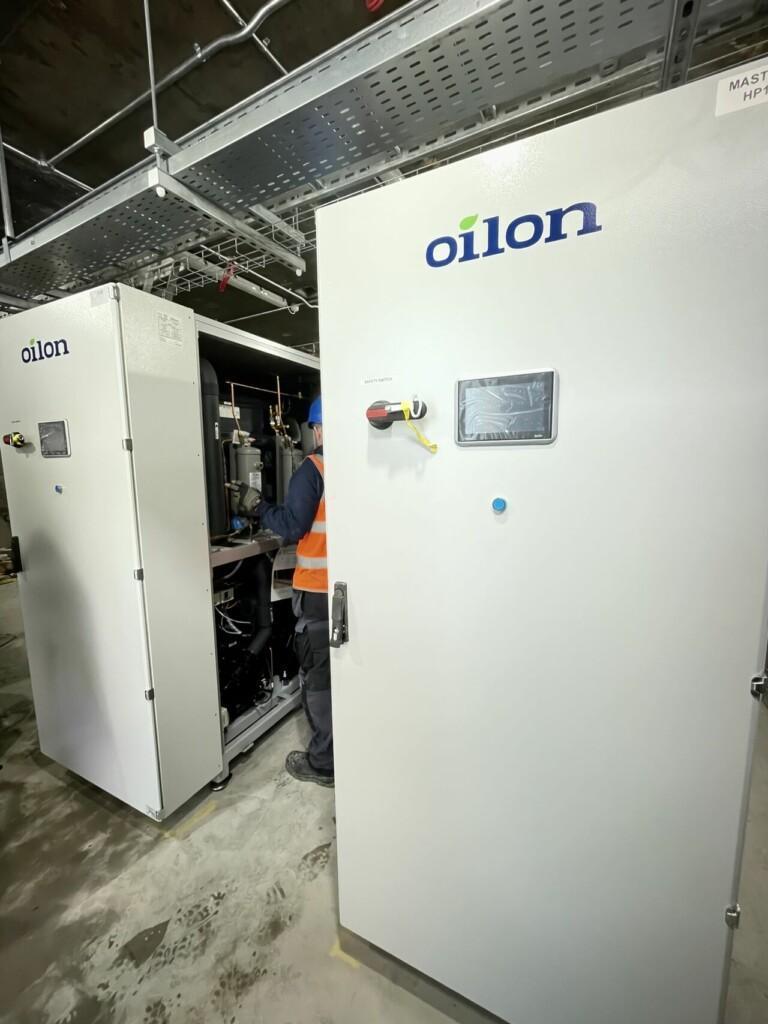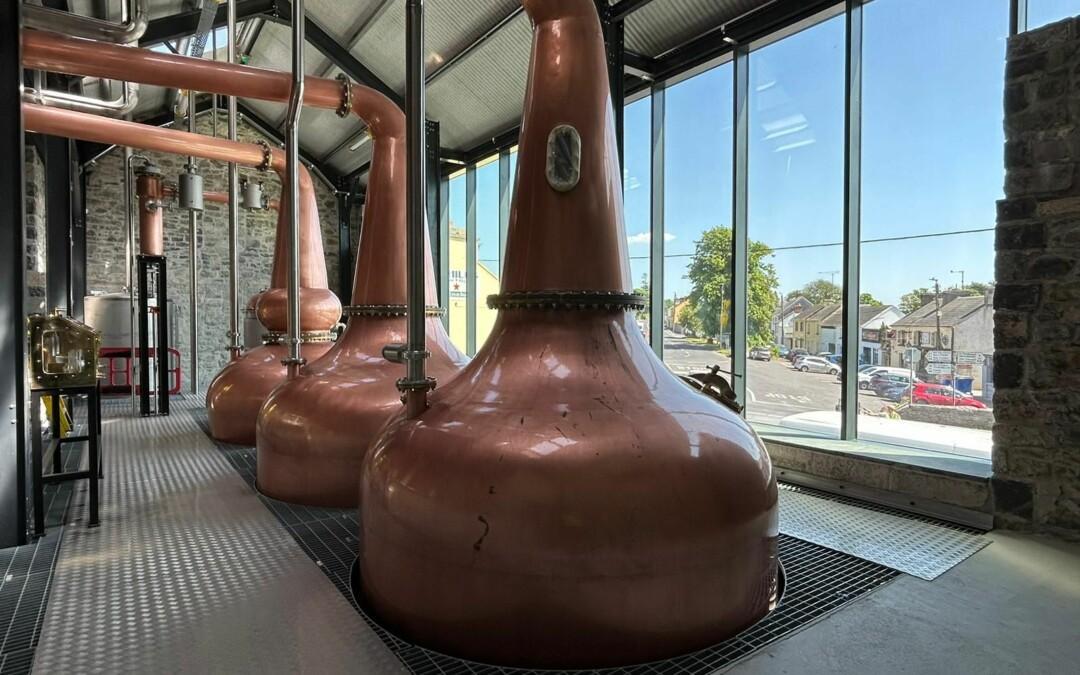The unique zero-emission distillation process of the Irish Ahascragh Distillery has been implemented with a comprehensive system design applied from the process industry: at the core are Oilon’s high temperature heat pumps, with which all the waste heat is put to use.
In the village of Ahascragh, about a two-hour drive from Dublin, there lies an over 200-year-old brick mill where grain was ground into flour from the early 1800s until the 1950s. Now, this magnificent historic building has been given a new life as the world’s first carbon neutral whiskey distillery, which opened its doors in the summer of 2023.
‘Distilling whiskey is very energy intensive: Each bottle of traditionally distilled whiskey produces 3-4 kilograms of carbon dioxide emissions. Now, we are proud to be able to offer consumers a whiskey alternative whose production has not harmed the environment,’ Gareth McAllister, the owner of Ahascragh Distillery, says.
Unlike other distilleries in Ireland, heat is provided to the distillery through heat pumps which means that there will be no flue related emissions, or impacts on the local environment.
Almost 120-degree water for the process with the help of pumps
Ireland produces plenty of green electricity: In 2022, 34 percent of the country’s electricity production (about 13.2 TWh) was wind power. Instead, thermal energy in the island state is still largely produced with fossil fuels. Even thermal energy used in whiskey distillation has traditionally been produced with natural gas.
‘In Ahascragh, the heat needed for the process is produced by high temperature heat pumps instead of natural gas. The pumps are powered by wind-generated electricity. In this way, we have been able to get rid of fossil fuels and the process has become zero-emission,’ McAllister explains.

Oilon has delivered two P450 series heat pumps and one smaller P150 heat pump to the distillery. P450 series pumps are capable of producing temperatures of up to 120 degrees, in Ahascragh the design temperature is 115 degrees. The pumps also use the latest refrigerant technology: they have a very low GWP value (Global Warming Potential).
Oilon’s experience in process industry heat pump solutions was utilized in the project. The Irish company Astatine which specializes in carbon-neutral turnkey solutions was responsible for the overall design of the system.
Waste heat recovery and circulation, COP up
Two parallel processes work in the distillery: the actual distillation process where alcohol is alternately steamed and condensed in a closed circuit, and the automatic cleaning process of the equipment, which requires a significant amount of warm water.
‘The total COP has been raised to an exceptionally high level by applying the operating methods of the process industry: heat pump technology is combined with process know-how, i.e., all generated waste heat is recovered with the pumps and utilized at another point in the process,’ Astatine’s manager Tom Marren says.
The heat pump design, heat recovery and thermal storage means that the energy inputs to the distillery are a third than that of traditional technology.
At the high temperatures of the P450 pumps, the distillation process itself is running. In this process the alcohol alternately vaporizes and condenses in a closed circuit. The pumps are equipped with separate heat exchangers which also produce lower temperature water for the washing process. The smaller P150 pump produces domestic hot water which can be used for additional cooling of the distillation process if necessary. ‘Comprehensive system planning and combination of processes was crucial in terms of COP and, of course, reducing emissions. The total COP of the process is an astounding 6.5. In other words, for every kWh of electricity used by the heat pump, it generates 6.5 kWh of energy for use in the process. This level of energy efficiency is exceptional and it can only be reached by utilising the energy flows in the process optimally,” says Sales and Marketing Director Sami Pekkola from Oilon.
Design of the overall system

Learn more about Oilon heat pumps here.
Contact our sales for more information about our heat pump solutions.

